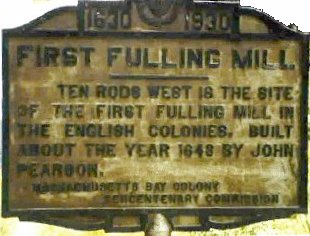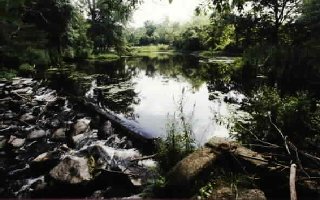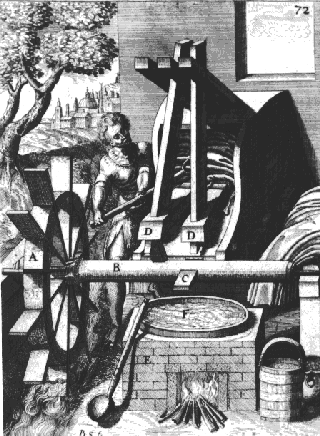Creating a New Country
Today, America leaves its Eastern beaches. The University of Houston's College of Engineering presents this series about the machines that make our civilization run, and the people whose ingenuity created them.
I'm back from a trip to Eastern Massachusetts -- that virtual museum of early American settlement. A large red frame building in Newburyport has the number 1654 over its door. That's not the address; it's the year it was built. Then I notice: this 350-year-old building is no log cabin; it's a comfortable European house.
An almost-hidden sign on old Route 1, the road to Boston, says: First Fulling Mill 1643. Out front is a fake water-driven mill -- an abandoned tourist attraction. But off in the woods, unmarked, is the original mill dam, built only 23 years after the pilgrims landed. It still diverts water from a stream into the mill race.
European water wheels had been used for 800 years by 1643. They took on back-breaking human tasks. Grist mills ground grain. Sawmills cut logs into boards. Fulling mills pounded wool for hours in hot soapy water to clean it, remove oils, and pre-shrink it. Mills had to be a first order of business here.
I'm surrounded by imported technologies and institutions. In downtown Boston I find another one. It's the Athenaeum, a lovely private lending library built in 1807. You can still borrow books from its collection of 750,000 volumes for an annual fee of $100. Few Americans today have even heard of private lending libraries.
These technologies and institutions were indeed built by people who'd stepped right off the boat. Just as most machinery for those water mills was made in England, so too were the institutions of the new world. Harvard and some of the fine private academies were audacious -- yet successful -- attempts to recreate English education in the new American outback.
What I'm seeing is a beachhead, still equipped with materiel and ideas from the mother country. The machinery of civilization would clearly have to mutate into something new. Education, technology and government would have to adapt to different resources, a different climate -- and a wholly new mix of people.
The colonists who struck off into the West sped that process. They had to sever the umbilical cord with Europe and recreate earlier and more primitive technologies from scratch. They put up log cabins and tents. They followed herds like early nomads. They used the services of itinerant doctors, clergy -- even scholars.
By mid-19th century, we'd created our own unique replacements for all that I saw last week. We invented the high-pressure, non-condensing steam engine -- light and powerful. We built land-grant public universities in each state. We invented the public library. In the end we left that beachhead, and we became America.
I'm John Lienhard, at the University of Houston, where we're interested in the way inventive minds work.
(Theme music)

Historic Marker for America's First Fulling Mill
Photo by John Lienhard

The surviving Mill Dam for America's First Fulling Mill
Photo by John Lienhard

A Contemporary 17th-Century European Fulling Mill from Böckler's Theatre of New Machines
Image Courtesy of the University of Kentucky's Special Collections Library